Training Women for War Production
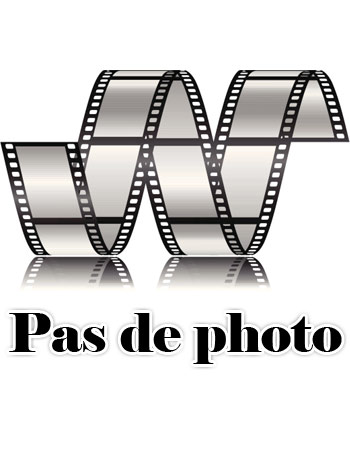
Si vous aimez ce film, faites-le savoir !
- Infos
- Casting
- Infos techniques
- Photos
- Vidéos
- Passages TV
- Citations
- Personnages
- Musique
- Récompenses
Training Women for War Production is a short film.
Eleanor Roosevelt, who was already a big supporter of the National Youth Administration, introduced and narrated this short film for the NYA during the Second World War.
The film opens with Mrs. Roosevelt sitting on a couch - a pink vase is placed in front of her to accentuate the color - and she tells the audience that during the emergency the NYA was changing its gears somewhat, to help the war effort. Whereas the NYA used to provide programs for youth, now it was concentrating on training young girls for war work. Then various scenes are shown explaining women's roles in various capacities, first focusing on traditionally feminine areas such as sewing parachutes and uniforms, nursing, and clerical work. However the latter part of the film increasingly shows the industrial side of war production, particularly the manufacturing of ammunition and weapons.
African-American women's efforts are highlighted in the film. Mrs. Roosevelt, an early champion of Civil Rights, noting that "Negro girls have an important role in war work."
Commentaires
Postez un commentaire :
Suggestions de films similaires à Training Women for War Production
Il y a 8197 films qui ont les mêmes thèmes (dont 442 films qui ont les mêmes 4 thèmes que Training Women for War Production), pour avoir au final 70 suggestions de films similaires.Si vous avez aimé Training Women for War Production, vous aimerez sûrement les films similaires suivants :
 , 1h10
, 1h10Réalisé par Frank Capra, Anatole Litvak
Origine Etats-Unis
Genres Guerre, Documentaire
Thèmes Documentaire sur la guerre, Documentaire historique, Politique, Documentaire sur la Seconde Guerre mondiale
Acteurs Walter Huston, Lloyd Nolan
Note67%





Face à la menace d’une perte de liberté, les États-Unis entrent en guerre illustre comment l’Amérique est passée de l’isolationnisme à un engagement total.
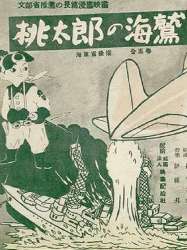
桃太郎の海鷲 (1943)
, 37minutesRéalisé par Mitsuyo Seo
Genres Fantasy, Animation
Thèmes Documentaire sur la guerre, Documentaire historique, Politique, Documentaire sur la Seconde Guerre mondiale
Note63%





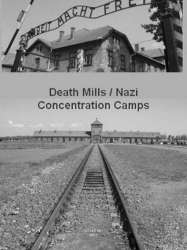
Death Mills (1945)
, 22minutesRéalisé par Billy Wilder
Origine Etats-Unis
Genres Guerre, Documentaire
Thèmes Le racisme, Religion, Documentaire sur la discrimination, Documentaire sur le droit, Documentaire sur la guerre, Documentaire historique, Documentaire sur une personnalité, Documentaire sur la religion, Politique, Religion juive, Documentaire sur la Seconde Guerre mondiale
Note74%





Le film fut à l’origine tourné avec une bande son en allemand pour être projeté dans l’Allemagne et l’Autriche occupées. Il s’agit du premier documentaire montrant ce que les Alliés découvrirent lorsqu’ils libérèrent les camps d’extermination nazi : les survivants, les conditions de vie, et la preuve d’un génocide. Le film fait état des aspects économiques de l’opération des camps. Des membres du personnel de ceux-ci, faits prisonniers, y sont interrogés. Et l’on y voit la visite forcée des habitants de villes voisines qui, de même que leurs compatriotes, sont accusés de complicité dans les crimes nazi – c’est l’une des rares condamnations de cette sorte enregistrées dans les archives alliées de la Seconde Guerre mondiale. Au même moment Samuel Fuller tournait son premier film amateur au camp de Falkenau, mais ces images ne seront visibles qu'en 1988, incluses dans Falkenau, vision de l’impossible, documentaire d’Emil Weiss.
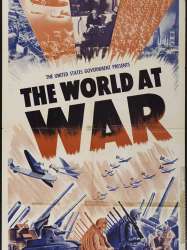
The World at War (1942)
, 1h6Origine Etats-Unis
Genres Guerre, Documentaire
Thèmes Documentaire sur la guerre, Documentaire historique, Politique, Documentaire sur la Seconde Guerre mondiale
Acteurs Paul Stewart
Note66%






Wood for War (1942)
Origine Etats-Unis
Thèmes Documentaire sur la guerre, Documentaire historique, Politique, Documentaire sur la Seconde Guerre mondiale
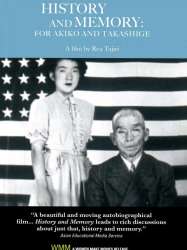 , 32minutes
, 32minutesOrigine Etats-Unis
Genres Documentaire
Thèmes La prison, Le racisme, Documentaire sur la discrimination, Documentaire sur le droit, Documentaire sur la guerre, Documentaire historique, Politique, Documentaire sur la Seconde Guerre mondiale
Note67%





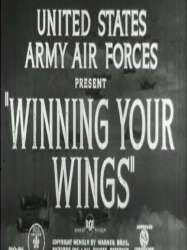
Winning Your Wings (1942)
Réalisé par John Huston
Origine Etats-Unis
Genres Guerre, Documentaire, Historique
Thèmes Transport, Aviation, Documentaire sur la guerre, Documentaire historique, Politique, Documentaire sur la Seconde Guerre mondiale, Forces armées des États-Unis
Acteurs James Stewart, Peter Graves, Leah Baird, Don DeFore, Charles Drake, Creighton Hale
Note61%





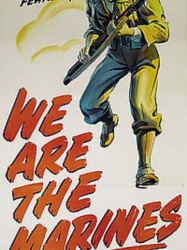
We Are the Marines (1942)
, 1h10Origine Etats-Unis
Genres Guerre
Thèmes Documentaire sur la guerre, Documentaire historique, Politique, Documentaire sur la Seconde Guerre mondiale
Note61%





The early portions of the film deal with the history of the Corps, from Colonial times to the 1942. The film's midsection details the arduous training procedure of the Few and the Proud at Parris Island and elsewhere. Finally, wartime newsreel footage is adroitly blended with dramatized re-enactments to illustrate the contributions, and the utter necessity of the marines in World War II.
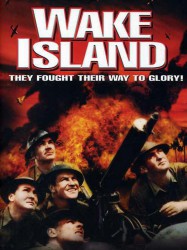
La Sentinelle du Pacifique (1942)
, 1h27Réalisé par John Farrow, Hal Walker, Harve Foster
Origine Etats-Unis
Genres Drame, Guerre, Action
Thèmes La mer, Transport, Aviation, Documentaire sur la guerre, Documentaire historique, Politique, Documentaire sur la Seconde Guerre mondiale, Forces armées des États-Unis
Acteurs Brian Donlevy, Robert Preston, William Bendix, Macdonald Carey, Albert Dekker, Walter Abel
Note66%





En décembre 1941, la petite garnison américaine de l'atoll de Wake est attaquée par la marine impériale japonaise en même temps que Pearl Harbor. Ce film - réalisé en 1942 soit quelques semaines après les faits - relate la défense héroïque des 449 marines et pilotes dans ce combat inégal qui dura 16 jours.
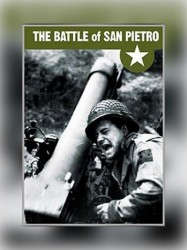
La Bataille de San Pietro (1945)
, 31minutesRéalisé par John Huston
Origine Etats-Unis
Genres Guerre, Documentaire
Thèmes Documentaire sur la guerre, Documentaire historique, Politique, Documentaire sur la Seconde Guerre mondiale
Acteurs John Huston
Note65%





Chronique de la bataille livrée dans San Pietro et réflexion sur les horreurs de la guerre et le prix de la liberté reconquise.
 Connexion
Connexion